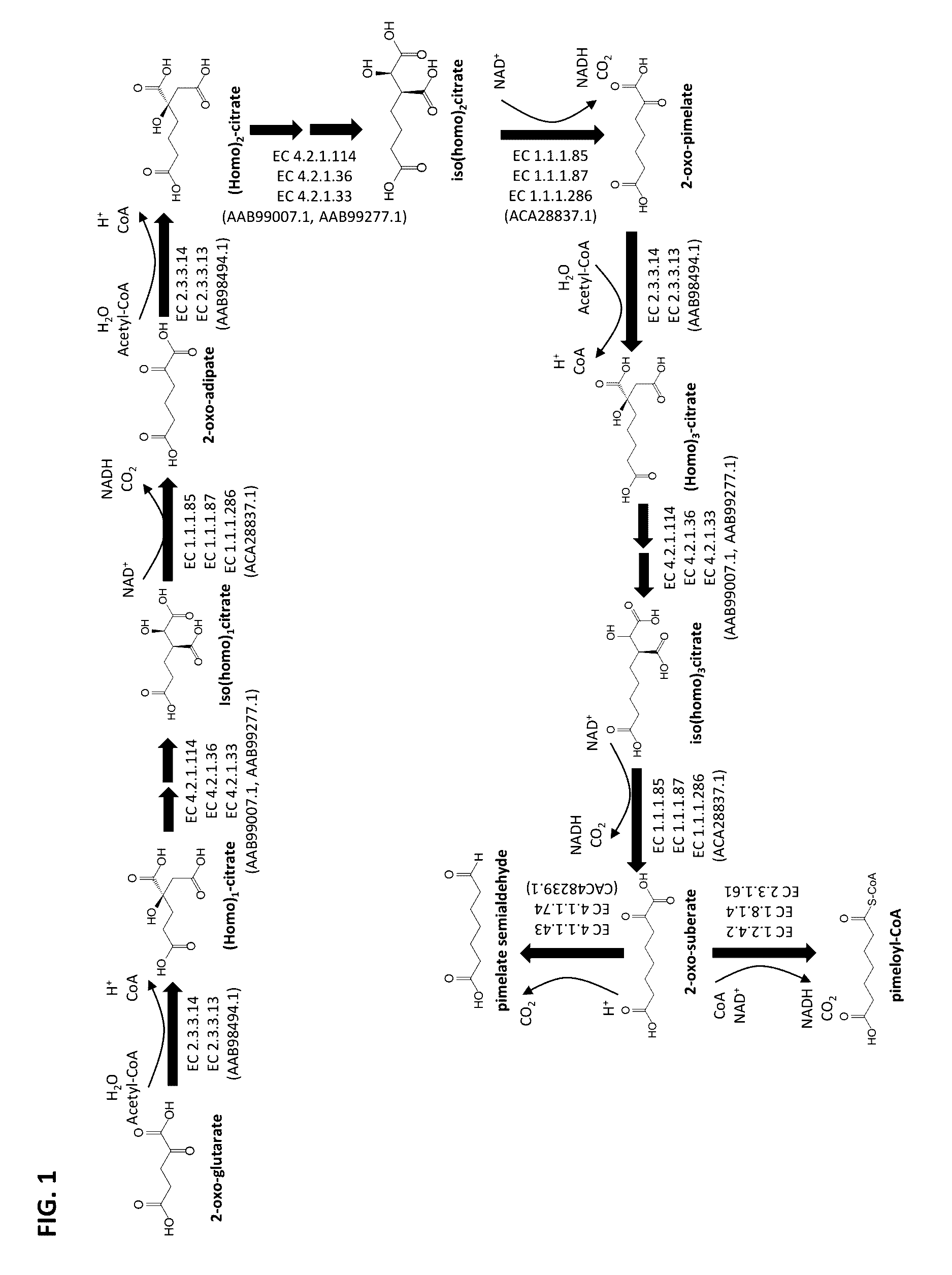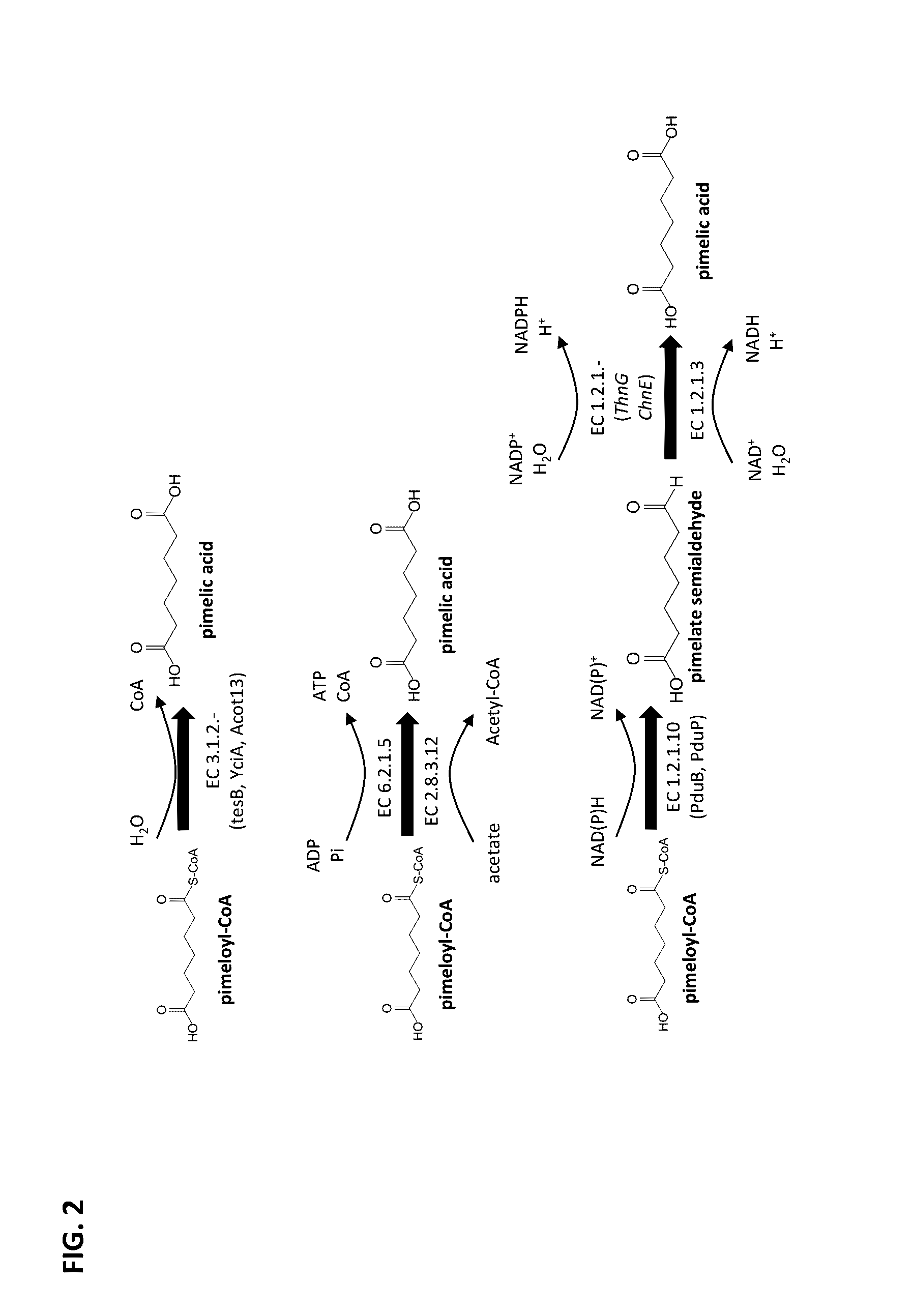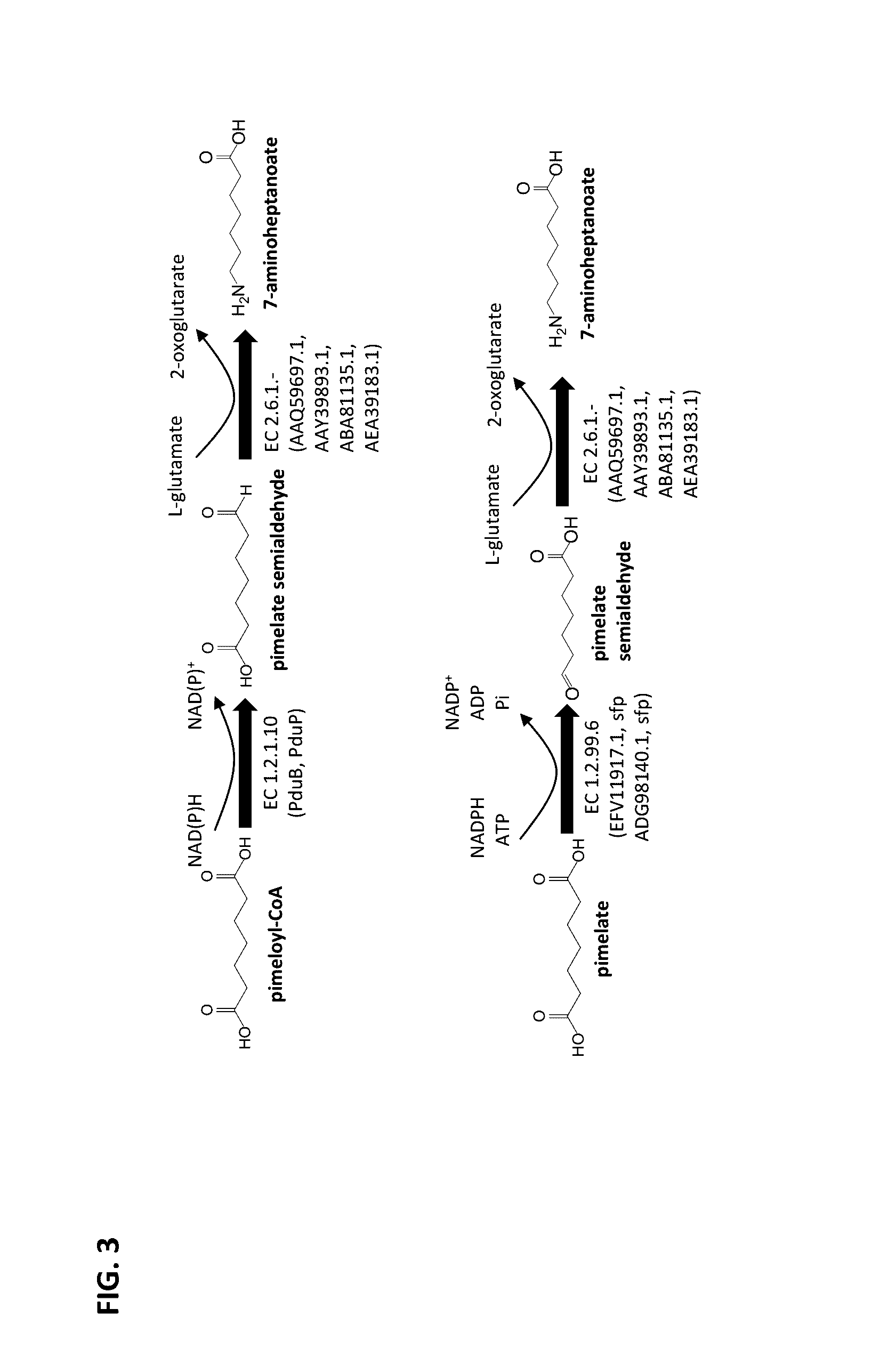Methods of producing 7-carbon chemicals via c1 carbon chain elongation associated with coenzyme B synthesis
a technology of c1 and c7, which is applied in the direction of lyase, transferase, ligase, etc., can solve the problem that no wild-type prokaryote or eukaryote naturally overproduces or excretes c7 building blocks to the extracellular environment, and achieves the effect of enhancing the activity of the carboxylate reductas
- Summary
- Abstract
- Description
- Claims
- Application Information
AI Technical Summary
Benefits of technology
Problems solved by technology
Method used
Image
Examples
example 1
Enzyme Activity of Thioesterases Using Pimeloyl-CoA as a Substrate and Forming Pimelic Acid
[0186]A sequence encoding an N-terminal His tag was added to the tesB gene from Escherichia coli that encodes a thioesterase (SEQ ID NO 1, see FIG. 7), such that an N-terminal HIS tagged thioesterase could be produced. The modified tesB gene was cloned into a pET15b expression vector under control of the T7 promoter. The expression vector was transformed into a BL21[DE3]E. coli host. The resulting recombinant E. coli strain was cultivated at 37° C. in a 500 mL shake flask culture containing 50 mL Luria Broth (LB) media and antibiotic selection pressure, with shaking at 230 rpm. The culture was induced overnight at 17° C. using 0.5 mM IPTG.
[0187]The pellet from the induced shake flask culture was harvested via centrifugation. The pellet was resuspended and lysed in Y-Per™ solution (ThermoScientific, Rockford, Ill.). The cell debris was separated from the supernatant via centrifugation. The thio...
example 2
Enzyme Activity of ω-Transaminase Using Pimelate Semialdehyde as Substrate and Forming 7-Aminoheptanoate
[0189]A sequence encoding an N-terminal His-tag was added to the genes from Chromobacterium violaceum, Pseudomonas syringae, Rhodobacter sphaeroides, and Vibrio Fluvialis encoding the ω-transaminases of SEQ ID NOs: 8, 10, 11 and 13, respectively (see FIG. 7) such that N-terminal HIS tagged ω-transaminases could be produced. Each of the resulting modified genes was cloned into a pET21a expression vector under control of the T7 promoter and each expression vector was transformed into a BL21[DE3]E. coli host. The resulting recombinant E. coli strains were cultivated at 37° C. in a 250 mL shake flask culture containing 50 mL LB media and antibiotic selection pressure, with shaking at 230 rpm. Each culture was induced overnight at 16° C. using 1 mM IPTG.
[0190]The pellet from each induced shake flask culture was harvested via centrifugation. Each pellet was resuspended and lysed via son...
example 3
Enzyme Activity of Carboxylate Reductase Using Pimelate as Substrate and Forming Pimelate Semialdehyde
[0195]A sequence encoding a HIS-tag was added to the genes from Segniliparus rugosus and Segniliparus rotundus that encode the carboxylate reductases of SEQ ID NOs: 4 and 7, respectively (see FIG. 7), such that N-terminal HIS tagged carboxylate reductases could be produced. Each of the modified genes was cloned into a pET Duet expression vector along with a sfp gene encoding a HIS-tagged phosphopantetheine transferase from Bacillus subtilis, both under the T7 promoter. Each expression vector was transformed into a BL21[DE3]E. coli host and the resulting recombinant E. coli strains were cultivated at 37° C. in a 250 mL shake flask culture containing 50 mL LB media and antibiotic selection pressure, with shaking at 230 rpm. Each culture was induced overnight at 37° C. using an auto-induction media.
[0196]The pellet from each induced shake flask culture was harvested via centrifugation....
PUM
| Property | Measurement | Unit |
|---|---|---|
| pH | aaaaa | aaaaa |
| elongation | aaaaa | aaaaa |
| aliphatic | aaaaa | aaaaa |
Abstract
Description
Claims
Application Information
 Login to View More
Login to View More - R&D
- Intellectual Property
- Life Sciences
- Materials
- Tech Scout
- Unparalleled Data Quality
- Higher Quality Content
- 60% Fewer Hallucinations
Browse by: Latest US Patents, China's latest patents, Technical Efficacy Thesaurus, Application Domain, Technology Topic, Popular Technical Reports.
© 2025 PatSnap. All rights reserved.Legal|Privacy policy|Modern Slavery Act Transparency Statement|Sitemap|About US| Contact US: help@patsnap.com



